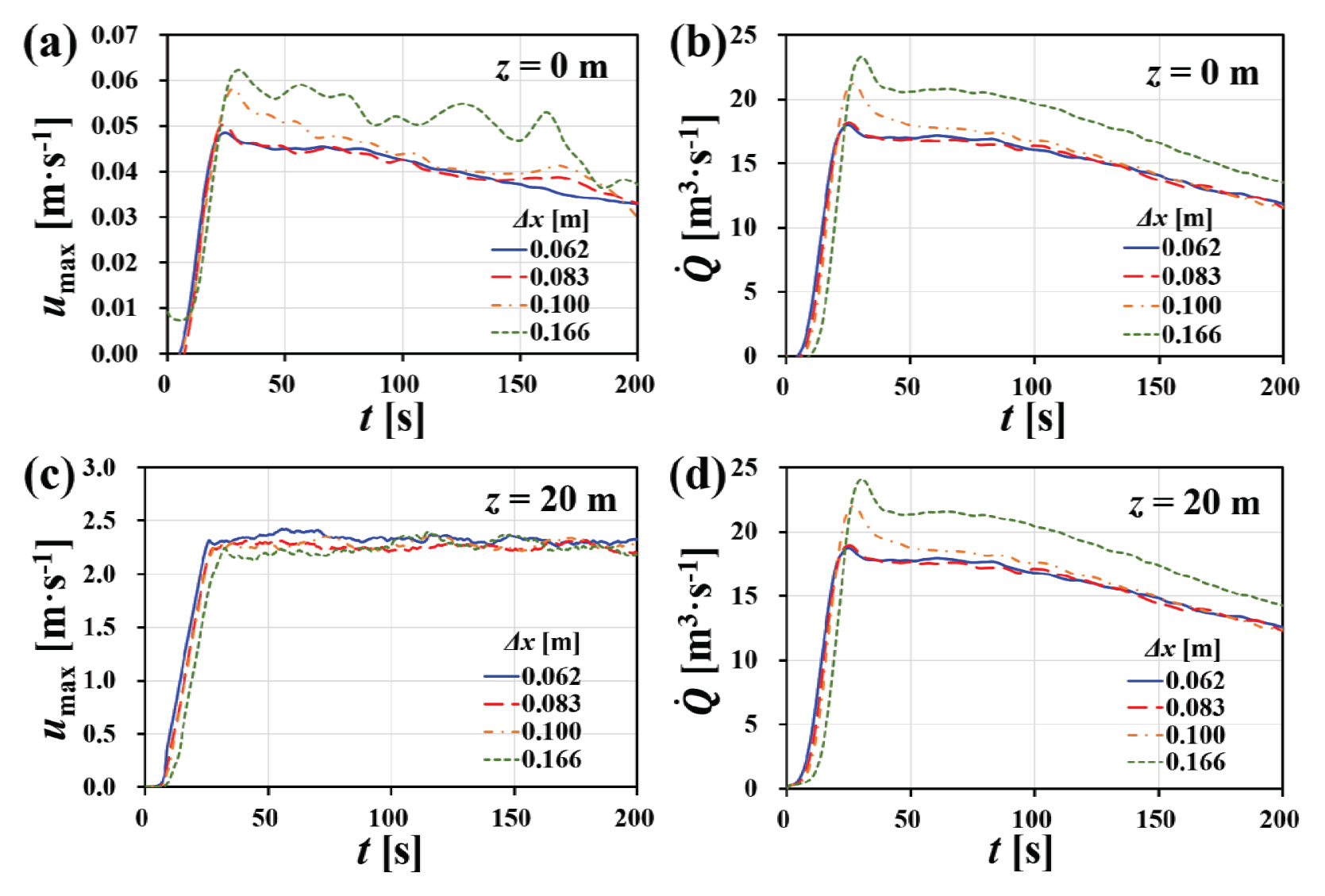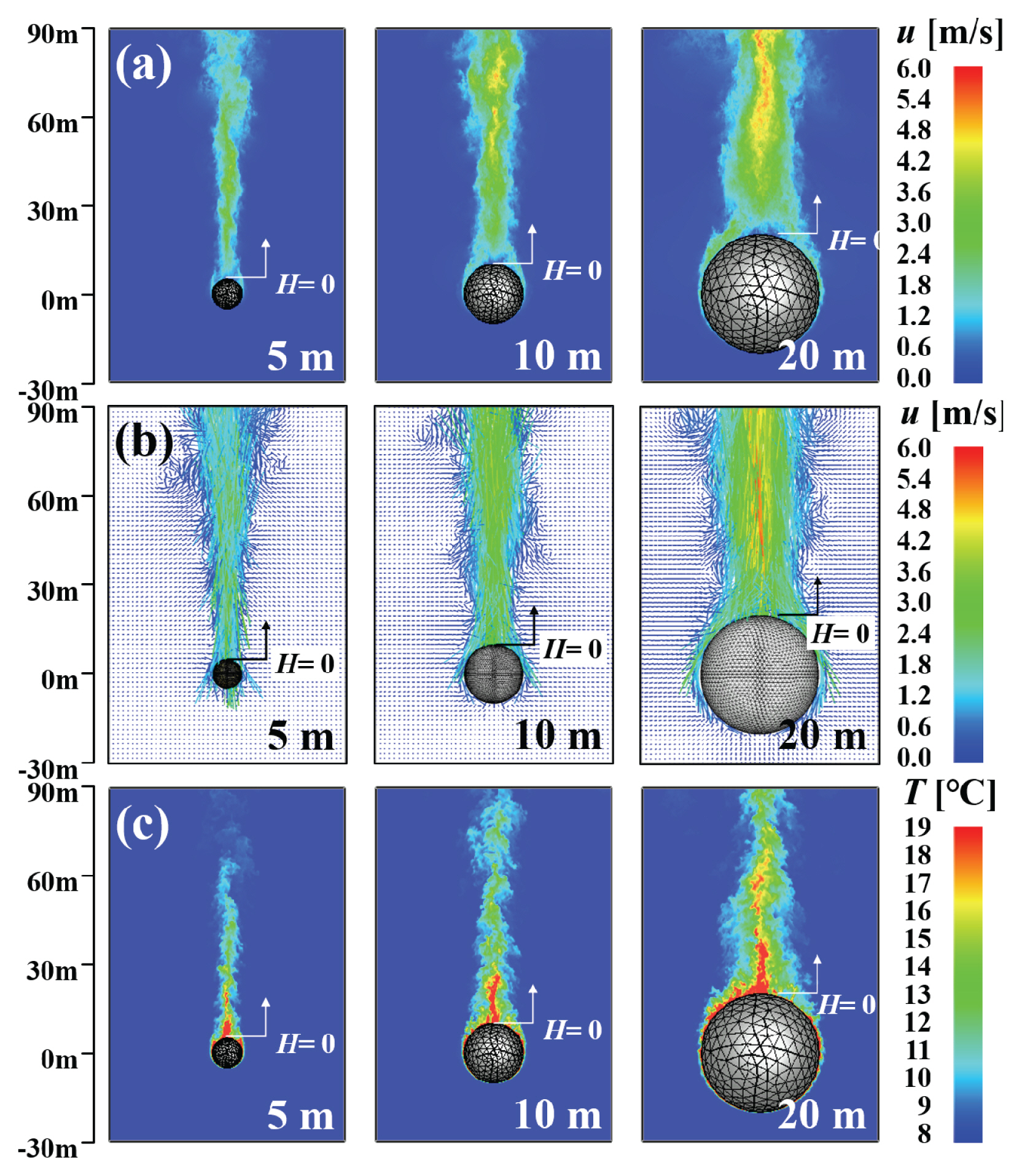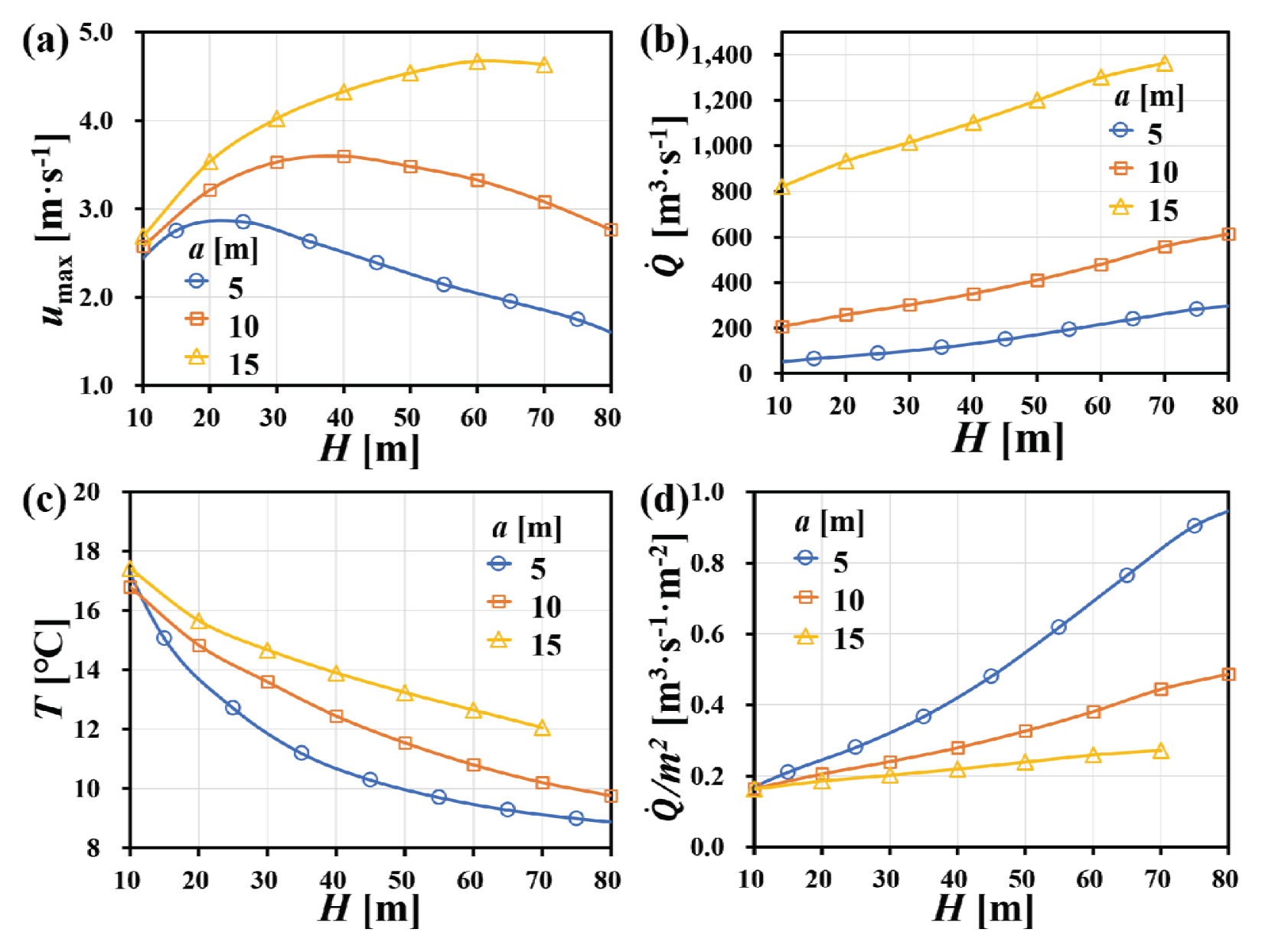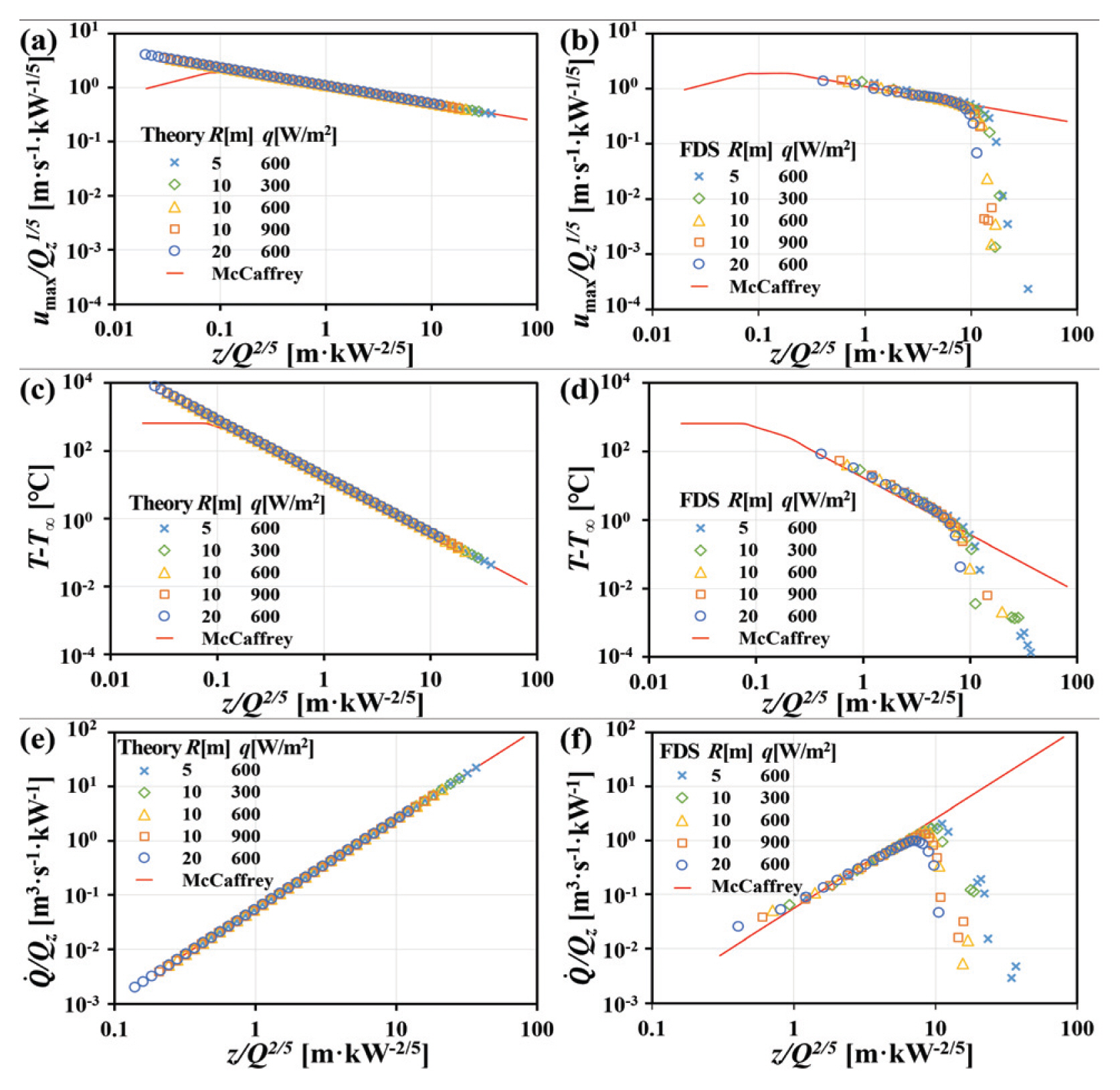 |
 |
- Search
| J. Korean Soc. Hazard Mitig. > Volume 19(7); 2019 > Article |
|
Abstract
Contaminants and particulate matter in the air are known to be serious health threats to the elderly and children with poor respiratory function. In order to filter such fine particles in the air, a household air cleaning device can be used indoors, but there is no specific solution for outdoor use. Recently, China introduced a huge chimney that purifies contaminated air. The principle behind the chimney is the installation of a large glass structure at the lower part of the chimney. The air beneath the glass is then heated by solar radiation and allowed to pass through a fibrous filter to be purified as it rises. In a similar concept, this study proposes a method of removing contaminants around the city at high elevation using solar radiation and a large, black spherical-shaped body. We developed a model of the large black sphere generated by solar radiation, and designed a massive air lifting model to remove polluted air. The buoyancy and plume phenomena around the sphere were analyzed and compared using a theoretical equation and numerical analysis method.
요지
공기 중의 오염물질과 미립자물질은 호흡기 기능이 취약한 노인과 어린이에게 심각한 공중 보건의 위협이 되는 것으로 알려져 있다. 이러한 공기 중의 미립자를 걸러내기 위해 실내에서는 가정용 공기 청정 장치가 사용되고 있으나, 실외의 경우에는 특별한 해결책이 없는 것이 현실이다. 최근 중국은 오염된 공기를 정화하는 거대한 굴뚝을 도입했는데, 이것의 원리는 굴뚝의 아래 부분에 대형 유리 구조물을 설치하고, 유리 아래의 공기를 태양의 복사열로 가열하도록 되어있다. 가열된 공기는 부력에 의해 상승하면서 섬유질 필터를 통과하여 정화되도록 만들었다. 비슷한 개념에서, 본 연구는 태양의 복사열과 구형의 대형 흑체를 이용하여 도시주변의 오염물질을 더 높은 고도로 상승시켜 제거하는 방법을 제안하고 있다. 이를 위해 태양의 복사열에 의해 발열하는 검은 대형 구체를 모델링하였고, 오염된 공기를 제거하기 위한 대규모의 공기 리프팅 모델을 설계하였다. 그리고 구체의 주변에 생성되는 부력과 플룸 현상을 이론식과 수치해석 방법을 사용하여 분석하고 비교하였다.
공기 중의 오염물질(pollutants matters)과 미립자물질(particulate matters)은 호흡기 기능이 취약한 노인과 어린이에게 심각한 공중 보건의 위협이 되는 것으로 알려져 있다(Watson, 2002; Nel, 2005; Streets et al., 2006; Andreae and Rosenfeld, 2008; Mahowald, 2011; Zhang et al., 2013; Horton et al., 2014). 2.5 ㎛ 미만의 입자 크기(PM2.5)는 인간의 기관지, 폐, 세기관지 및 폐포에 쉽게 침투 할 수 있기 때문에 특히 위험한 것으로 간주된다(Miller, 2000; Taneja et al., 2008).
이러한 공기 중의 미립자를 걸러내기 위해 실내에서 사용되고 있는 가정용 공기 청정 장치는 사용하기 편리한 크기로 제작되어 사용된다. 이러한 장치에서 사용되는 공기필터는 입자상 물질 (PM)을 물리적으로 여과하는 섬유상 물질로 구성되며, 종종 이온 발생기 또는 전기적 인력이 있는 공기 필터(REFS)가 사용된다. 야외에서 PM에 노출되는 동안 PM을 물리적으로 차단하는 휴대용 섬유 마스크가 PM 흡입을 예방하는 유일한 방법 일 수 있다.
최근 중국은 오염된 공기를 정화하는 거대한 굴뚝을 도입했다(Cyranoski, 2018). 거대한 굴뚝은 태양의 복사열을 받는 대형 유리 구조물 위에 설치되어 유리 아래의 공기를 가열하고 부력을 통해 뜨거운 공기를 위로 상승시키고, 상승된 공기는 섬유질 필터를 통과하여 굴뚝 위로 나가기 전에 정화되는 구조이다.
비슷한 맥락에서 본 연구에서는 태양 복사열을 이용하여 “블랙 풍선(black balloon)”을 가열하는 것을 제안한다. 블랙 풍선은 주변 공기의 상승을 유도하기 위한 열원으로 사용된다. 즉, 흑색으로 칠해진 풍선은 태양 에너지의 효과적인 수집가로 사용될 수 있으며 가열된 풍선에서 발생한 플룸을 이용하여 도시 주변에 갇혀있는 오염 물질을 대기 위로 상승시킬 수 있다. 결과적으로, 오염 된 공기는 더 높은 고도로 상승 할 것이고, 그 결과 더 낮은 고도에서는 상대적으로 깨끗한 공기를 유입한다.
방사형 방향의 속도와 온도의 가우시안 프로파일을 기반으로 축대칭 플룸에 대한 수많은 연구가 있었으며, 이들 이론은 플룸이 축방향으로 확장하면서 점열원에서 멀어질수록 확산하는 개념을 따르고 있다. Zeldovich (1937)는 자기 유사 층류 플럼(self-similar laminar plume)에 관한 이론을 처음으로 제시했다. Yarin (2012)은 Prandtl 혼합 길이 이론에 근거한 난류 플룸에 대한 자기 유사 이론식을 연구했다. 열원 위의 부력 대류를 개략적으로 설명하는 이론은 Morton et al. (1956)과 Turner (1969), Heskestad (1984)에 의해 연구되었는데, 이들은 축방향의 함수로서 플룸 유량을 모델링했으며, Quintiere and Grove (1998)는 점열원으로부터 “near-field” 연소와 “far-field” zone을 구분하는 모델을 제시했다.
이와 같이 상승하는 공기의 속도, 온도 및 유량은 넓은 범위의 가열 열량에 대한 자체 유사난류 플룸 이론을 통해 분석적으로 추정 할 수 있다.
이번 연구는 오염된 공기를 깨끗하게 하는 대규모의 공기 리프팅을 모델링하기 위해 플룸 이론과 전산 유체역학적 방법을 적용한 초기의 연구로써, 블랙 풍선을 등방성으로 발열하는 거대한 구로 이상화 하고, 구의 주변에 생성되는 자연 부력과 이에 따른 플룸현상에 영향을 미치는 요인들을 분석하고자 이론과 수치해석적 분석을 통해 상호 비교하고 고찰하였다. 미세먼지의 입자 운동성 및 풍선 내부 및 외부의 열역학적 환경에 의한 블랙 풍선의 효율성 측면의 문제는 실행단계의 연구로 구분하여 후속 연구에서 다루고자 한다.
Yarin (2012)에 따르면, 주요 관심사인 선대칭 축의 흐름을 주도하는 가장 중요한 매개 변수는 방출된 QZ (예: 와트로 측정) 또는 QY = QZ/(ρc)이다. 여기서 ρ와 c는 가스의 일정한 압력에서 밀도와 비열이다. 특히, 축 대칭 플룸에서
여기서, u는 플룸 내의 종 방향 속도성분이고, T는 플룸 내의 온도 분포이며, y는 플룸 축으로부터 계산 된 임의의 플룸 단면에서의 반경 좌표이다(현재의 경우 수직 축은 x). QY (또는 QZ)의 값은 항상 알려지고 주어진 매개 변수로 간주된다. 현재의 경우 두 값은 2π로 나뉘어진다.
상승하는 플룸을 따르는 최대 종 방향 속도는 umax이라 할 때, 난류의 축 방향 대칭성 플룸에서 다음과 같이 umax에 대한 식으로 표현된다(Yarin, 2012, 첫 번째 Eq. (1)).
여기서 β는 열팽창 계수(가스의 알려진 물리적 매개 변수)이고 g는 중력 가속도이다.
플룸의 높이가 L인 경우, Eq. (1)는 플룸의 상부에서 부력에 의한 속도는 다음과 같다.
유사하게, 그러한 플룸의 축 방향에서 최대 온도 Tmax는 다음과 같이 주어진다(Yarin, 2012, 두 번째 식에서 오차수정. Eq. (2)).
따라서, 플룸 상부 Ttop에서 연기를 운반하는 가스의 온도는 다음의 관계를 갖는다.
상승하는 플룸에 의해 발열원 주변으로부터 공기를 쉽게 흡입하도록 허용하는 경우, 자유 플룸에 의한 체적 유량 Vol은 다음과 같으며
자기 유사 공식은 다음과 같이 표현된다.
따라서, 플룸 상단 Voltop을 통한 체적 유량은 다음과 같이 표현되며
이것은 플룸 상부에서의 연기 농도가 발열원에서의 L-5/3에 비해 감소한다는 것을 의미한다.
블랙 풍선의 수치해석을 위하여 FDS (Fire Dynamics Simulator) version 6.7.0을 사용하였다. 수치해석에 앞서 수치해석 모델을 검증하기 위해 격자계의 해상도 테스트를 수행하였다.
최적의 격자 간격을 찾기 위해 사용된 도메인의 크기는 20 × 20 × 20 m3이며 이것을 120 × 120 × 120 (1.73M nodes), 200 × 200 ×200 (8.00M nodes), 240 × 240 × 240 (13.82M nodes), 320 × 320 × 320 (32.77M nodes)의 4가지 격자계를 사용하여 그 결과를 비교하였다.
도메인의 바닥면 중심으로부터 높이 10 m지점에 반지름 R = 5 m인 블랙 풍선의 중심이 오도록 배치하였고, 블랙 풍선의 형상을 FEM으로 모델링하여 사용하였다.
초기 조건으로 도메인 내부와 외부에서 발생하는 초기 유동 및 강제 유동은 없는 것으로 설정하였고, 경계 조건으로 도메인의 6면을 개방상태로 적용하여 경계면에서 물질의 이동이 도메인의 내부 및 외부에서 자유롭게 발생하도록 하였다. 또한 블랙 풍선의 표면에는 벽면에서 발생할 경계층를 고려하여 no-slip 조건으로 설정하였다.
블랙 풍선 내부에서 발생하는 열전달 및 대류현상은 고려하지 않았고, 하나의 강체로 가정하여 태양으로부터 전달받은 복사 에너지는 블랙 풍선의 표면에서 모두 등방향성의 대류 열류로 전환되고 표면에서 대기로의 복사 열류는 없는 것으로 가정하였다. 그리고 대한민국 서울의 봄과 가을의 평균 일사량을 참고하여 대류 열류 q = 600 W/㎡가 일정하게 블랙 풍선의 표면에서 발열하는 것으로 설정하였다.
실제의 상황에서 블랙 풍선이 높은 상공에 설치될 것을 고려하여 수치해석에 사용될 대기의 조건을 상공 1 km로 가정하고 미국 NASA (1976)의 ‘1976 Standard Atmosphere’를 참조하여 기온은 281.6 K, 기압은 89874.6 Pa의 상태를 사용하였으며 대기의 습도는 고려하지 않았다.
블랙 풍선의 발열에 의해 수직으로 상승하는 플룸이 발생하고, 이로 인해 Fig. 1과 같이 블랙 풍선의 아래에서 위 방향으로 주유동이 형성이 된다. 그리고 주유동 방향으로 형성되는 유동의 최대 수직유속(vertical maximum velocity) umax와 체적 유량(volume flow rate) Q ˙
Fig. 2는 도메인의 바닥면과 천장면에서의 최대 수직 유속 umax와 체적 유량 Q ˙
Figs. 2(b)와 2(d)는 각각 도메인의 바닥면과 천장면을 통과하는 체적 유량 Q ˙ Q ˙
본 연구에서는 블랙 풍선의 표면 발열량과 크기에 따른 상대적인 변화를 관찰하는 것에 목적이 있으므로, 체적유량에서는 일정한 오차가 발생하지만 수직 유속을 비교적 정확히 예측하고 있는 0.16 m의 격자계를 사용하여 수치해석의 계산효율성을 확보하였다.
블랙 풍선 표면의 발열량 변화에 따라 블랙 풍선의 최대 수직 유속 umax 및 체적 유량 Q ˙
모델링에 사용한 도메인의 크기는 80 × 80 × 120 m3이고, 격자는 500 × 500 × 750개의 정형의 사각격자를 사용하였다. 수치해석에 사용된 초기 조건과 경계 조건은 2.2장에서 사용한 조건과 동일하게 적용하였다.
Fig. 3은 블랙 풍선의 반지름 R = 10 m로 일정하고, 발열량의 변화에 따라 블랙 풍선의 표면에서 발생하는 대류 열류 q = 300, 600, 900 kW/㎡로 증가할 때, 블랙 풍선 상부에서 발생하는 플룸의 수직 유속 u와 온도 T의 변화를 등고선으로 보여주고 있다. 여기서 플룸이 생성되는 지점을 블랙 풍선의 최상부로 가정하고 여기의 높이를 H = 0 m로 정의하면, 이번 장에서 분석하는 세 종류의 대류 열류에서 H = 0 m는 모두 z = 10 m일 때가 된다.
수직 유속 u의 등고선에서는 H = 0 m일 때 수직 유속이 u = 0 m/s로 예측되었고, 플룸이 상승하면서 수직 유속 u가 가속되어 증가하는 것을 확인할 수 있다. 이것은 블랙 풍선에서 발생한 플룸이 자연 부력에 의한 플룸이기 때문에 플룸이 발생하는 블랙 풍선의 표면에서는 수직 유속 u = 0 m/s인 것으로 추정할 수 있다. 그리고 플룸이 수직 상승하는 유속의 크기는 블랙 풍선의 표면에서 발생하는 대류 열류 q가 증가할수록 크게 증가하는 것을 확인할 수 있다. 이것은 대류 열류 q가 증가할수록 H = 0 m에서 생성되는 플룸의 전체 수직 상승 운동량이 증가하기 때문인 것으로 추정할 수 있다.
온도 T의 변화 등고선에서는 H = 0 m일 때 대류 열류 q가 증가할수록 온도 T는 16, 20, 24℃로 예측되었고, 플룸이 상승하면서 온도 T가 점차 감소하여 대기의 온도에 가까워지는 것을 확인할 수 있다. 이것은 블랙 풍선에서 발생한 자연부력 플룸이 수직 상승할 때 주변 공기가 유입되기 때문으로 추정할 수 있다. 또한 블랙 풍선의 대류 열류 q가 증가할수록 플룸의 초기 온도가 높은 H까지 유지되는 것을 확인할 수 있다. 이것은 블랙 풍선의 대류 열류 q가 증가할수록 H = 0 m에서 생성되는 플룸의 온도 T가 높아지고, 초기 플룸의 온도 T가 높아질수록 자연 부력에 의한 수직 상승 운동량이 증가하여 동일한 시간 안에 더 높은 H까지 상승하기 때문인 것으로 추정할 수 있다.
Fig. 4는 블랙 풍선의 반지름 R = 10 m로 일정하고, 발열량의 변화에 따라 블랙 풍선의 표면에서 발생하는 대류 열류 q = 300, 600, 900 kW/m2로 증가할 때, 블랙 풍선 상부에서 발생하는 플룸의 최대 수직 유속 umax와 온도 T, 체적 유량 Q ˙ Q ˙ Q ˙ Q ˙ Q ˙ Q ˙ Q ˙ Q ˙ Q ˙ Q ˙ Q ˙ Q ˙ Q ˙
블랙 풍선 표면의 발열량이 일정한 상태에서 블랙 풍선의 크기 변화에 의한 최대 수직 유속 umax 및 체적 유량 Q ˙
모델링에 사용한 도메인의 크기, 격자, 도메인의 경계면 설정, 블랙 풍선의 표면상태 및 열전달 모델은 2.2장에서 사용한 조건과 동일하게 사용하였고, 모델링에 사용한 대기의 조건도 동일한 가정을 사용하였다.
Fig. 5는 블랙 풍선의 표면에서 발생하는 대류 열류 q = 600 kW/㎡로 일정할 때, 반지름 R = 5, 10, 20 m로 크기가 증가함에 따라 블랙 풍선 상부에서 발생하는 플룸의 수직 유속 u와 온도 T의 변화를 등고선으로 보여주고 있다. 여기서 플룸이 생성되는 지점을 블랙 풍선의 최상부로 가정하고 여기의 높이를 H = 0 m로 정의하면, 이번 장에서 분석하는 3가지 블랙 풍선의 크기에서 H = 0 m는 각각 z = 5, 10, 20 m일 경우가 된다.
수직 유속 u의 등고선에서는 H = 0 m일 때 수직 유속 u = 0 m/s로 예측되었고, 플룸이 상승하면서 수직 유속 u가 가속되어 점차 증가하는 것을 확인할 수 있다. 그리고 플룸이 수직 상승하는 유속의 크기는 블랙 풍선의 반지름 R이 증가할수록 크게 증가하는 것을 확인할 수 있다. 이것은 블랙 풍선의 반지름 R이 증가할수록 H = 0 m에서 생성되는 플룸의 반경이 커지고, 이로 인해 플룸의 전체 수직 상승 운동량이 커지기 때문인 것으로 추정할 수 있다.
온도 T의 변화 등고선에서는 블랙 풍선의 반지름 R 크기에 상관없이 모두 H = 0 m일 때 온도 T = 19℃로 예측되었고, 플룸이 상승하면서 온도 T가 점차 감소하여 대기의 온도에 가까워지는 것을 확인할 수 있다. 또한 블랙 풍선의 반지름이 증가할수록 플룸의 초기 온도 T가 더 높은 H까지 유지되는 것을 확인할 수 있다. 이것은 블랙 풍선의 반지름 R이 증가할수록 H = 0 m에서 생성되는 플룸의 반경이 커지고, 플룸 반경이 커질수록 초기 중심 온도는 유입되는 주변 공기로부터 더 높은 H까지 보호되며 상승하기 때문인 것으로 추정할 수 있다.
Fig. 6은 고정된 발열량에 의해 블랙 풍선의 표면에서 발생하는 대류 열류 q = 600 kW/m2로 일정하고, 블랙 풍선의 반지름 R = 5, 10, 20 m로 커질 때, 블랙 풍선 상부에서 발생하는 플룸의 최대 수직 유속 umax와 온도 T, 체적 유량 Q ˙ Q ˙ Q ˙ Q ˙ Q ˙ Q ˙ Q ˙ Q ˙ Q ˙ Q ˙ Q ˙ Q ˙ Q ˙
수치해석 모델의 검증을 위해 이론식 Eq. (2)를 통해 예측된 최대 수직 유속 umax와 McCaffrey (1979)의 경험적 수식 Eqs. (6)~(7) 및 수치해석의 결과를 비교하여 분석하였고, 이론식 Eq. (3)을 통해 예측된 체적 유량 Q ˙
여기서 k는 coefficients for center line correlations이며, η는 exponent of center line correlations, C는 buoyancy constant, g는 gravity이다. 이러한 상수 및 계수는 Table 3에 요약되어 있다.
매개변수의 검증 블랙 풍선의 발열 면적 ㎡과 단위 면적당 발열량 W/㎡으로 설정하고 이들의 변화에 대한 플룸의 최대 수직 유속 umax와 체적 유량 Q ˙
수치해석 모델 검증을 위해 수치해석에서 사용한 도메인은 80 × 80 × 360 m3이며, 단순히 높이에 따른 플룸의 상승현상 만을 관찰하기 위한 목적이므로 200 × 200 × 900 (36.00 M nodes)의 성긴 격자계를 사용하였다. z, r 축으로는 스트레칭 격자를 사용하여 중심축에서 최소 간격이 0.04 m이고 도메인의 경계와 접한 부분에서는 최대 간격이 1.1 m가 되게 하였으며, z축으로는 0.4 m로 등 간격의 격자를 사용하였다. 도메인의 바닥면 중심으로부터 높이 60 m 지점에 블랙 풍선의 중심이 오도록 배치하였고, 나머지 초기 조건과 경계 조건은 2.2장의 수치해석 조건과 동일하게 적용하였다. 수치해석 모델 검증을 위해 사용한 블랙 풍선의 반지름 R과 표면적 A, 대류 열류 q 및 이에 대한 블랙 풍선의 총발열량 Qz을 Table 2에 정리하였다.
또한 수치해석 모델 검증에서 사용한 발열 조건은 블랙 풍선의 반지름 R = 5, 10, 20 m로 커지면서 대류 열류 q = 600 W/㎡로 일정한 경우와, 반지름 R = 10 m로 크기가 일정하면서 대류 열류 q = 300, 600, 900 W/㎡로 증가하는 경우에 대하여 분석하였으며, 이들의 총 발열량 Qz = 188, 754, 3016 kW 및 377, 754, 1131 kW이다.
이론식과 경험식 및 수치해석의 예측값을 비교하기 위한 최대 수직 유속 umax와 체적 유량 Q ˙
Fig. 7(a)에서는 블랙 풍선의 크기와 발열량의 조건에 따른 5가지 경우에 대하여 이론식 Eq. (2)에 의한 최대 수직 유속 umax의 예측값을 McCaffrey의 경험식 Eq. (6)과 비교하여 보여준다. 모든 케이스에 대하여 최대 수직 유속 umax의 이론식 예측값이 McCaffrey의 경험식과 잘 일치하고 있음을 확인할 수 있다. 그리고 Fig. 7(b)에서는 블랙 풍선의 크기와 발열량의 조건에 따른 5가지 경우에 대하여 수치해석을 이용해 예측한 최대수직 유속 umax 값과 McCaffrey의 경험식 Eq. (6)을 비교하여 보여준다. 수치해석의 결과에서도 모든 케이스에 대하여 최대수직 유속 umax의 수치해석 예측값이 McCaffrey의 경험식과 잘 일치하고 있음을 확인할 수 있다. 하지만 높이 z/Qz2/5 = 10에서 수치해석의 결과는 급격히 감소하여 umax/Qz1/5 = 0에 가까워지는 현상을 관찰할 수 있다.
Fig. 7(c)에서는 블랙 풍선의 크기와 발열량의 조건에 따른 5가지 경우에 대하여 이론식 Eq. (4)에 의한 온도차 T-T∞의 예측값을 McCaffrey의 경험식 Eq. (7)과 비교하여 보여준다. 모든 케이스에 대하여 온도차 T-T∞의 이론식 예측값이 McCaffrey의 경험식과 잘 일치하고 있음을 확인할 수 있다. 그리고 Fig. 7(d)에서는 블랙 풍선의 크기와 발열량의 조건에 따른 5가지 경우에 대하여 수치해석을 이용해 예측한 온도차 T-T∞의 값과 McCaffrey의 경험식 Eq. (7)을 비교하여 보여준다. 수치해석의 결과에서도 모든 케이스에 대하여 온도차 T-T∞의 수치해석 예측값이 McCaffrey의 경험식과 잘 일치하고 있음을 확인할 수 있다. 하지만 최대수직 유속 예측에서와 같이 온도 예측에서도 높이 z/Qz2/5 = 10에서 수치해석의 결과는 급격히 감소하여 T-T∞ = 0에 가까워지는 현상을 관찰할 수 있다.
Fig. 7(e)에서는 블랙 풍선의 크기와 발열량의 조건에 따른 5가지 경우에 대하여 이론식 Eq. (7)에 의한 체적 유량 Q ˙ Q ˙ Q ˙ Q ˙ Q ˙ Q ˙
본 연구에서는 인구와 교통이 밀집되어 있는 대도시에서 흔히 발생되고 있는 공기 오염물질에 의한 스모그현상을 제거하기 위한 방법으로 태양의 복사 에너지에 의해 발생하는 자연 부력 플룸과 블랙 풍선을 결합하여 이용하는 것을 제안하였다. 그리고 그 효과를 검토하기 위해 블랙 풍선을 등방성으로 발열하는 구로 이상화하여 구의 주변에서 생성되는 기류 및 영향인자에 관하여 관련 이론식을 통해 예측하였고, 경험식과 수치 해석을 통해 비교 및 검증을 하였다. 이론식을 통해 예측한 결과는 경험식 및 수치해석적 방법과 매우 잘 일치하였으나, 이론적 가정에 의한 제한으로 플룸의 최상단에서는 예측의 한계성을 보였다.
본 연구에서 수행한 다양한 비교 및 검증의 결과, 다음과 같이 연구의 내용을 정리하였다.
수직 상승하는 자연 부력 플룸의 최대 수직 유속 umax 및 체적 유량 Q ˙
하지만, 관련 이론의 이론적 가정의 한계로 유속 성분인 u/Qz1/5와 체적 질량 성분인 Q ˙
발열량의 증가에 의한 블랙 풍선의 대류 열류 q의 증가는 플룸의 최대 수직 유속 umax, 온도 T, 체적 유량 Q ˙ Q ˙
블랙 풍선의 크기에 영향을 주는 반지름 R의 증가는 플룸의 최대 수직 유속 umax, 온도 T, 체적 유량 Q ˙ Q ˙
블랙 풍선에 의한 자연 부력 플룸을 이용해 대도시의 스모그 현상을 제거하기 위해, 본 연구에서는 주로 블랙 풍선의 표면 발열량과 크기의 영향성에 관해 분석하였지만, 현실적인 적용을 위해서는 지상으로부터 블랙 풍선이 설치되는 최적의 높이와 발생된 플룸을 재순환 현상이 없이 대기 밖으로 날려 보낼 효과적인 상승 높이 등에 대한 분석이 함께 고려되어야 할 것으로 판단된다.
Table 1
Summary of Total Heat Release on Black Balloon Surface
| Radius [m] | Area A [m2] | CHF* q [W/m2] | Total Heat release Qz [kW] |
|---|---|---|---|
| 10 | 1256.6 | 300 | 377.0 |
| 10 | 1256.6 | 600 | 754.0 |
| 10 | 1256.6 | 900 | 1131.0 |
Table 2
Summary of Total Heat Release on Black Balloon Surface
| Radius [m] | Area A [m2] | CHF* q [W/m2] | Total Heat release Qz [kW] |
|---|---|---|---|
| 5 | 314.2 | 600 | 188.5 |
| 10 | 1256.6 | 600 | 754.0 |
| 20 | 5026.5 | 600 | 3016.0 |
References
Andreae, M, and Rosenfeld, D (2008) Aerosol cloud precipitation interactions. Part 1. The nature and sources of cloud-active aerosols. Earth-Science Reviews, Vol. 89, No. 1–2, pp. 13-41.

Taneja, A, Saini, R, and Masih, A (2008) Indoor air quality of houses located in the urban environment of Agra, India. Annals of the New York Academy of Sciences, Vol. 1140, No. 1, pp. 228-245.


Cyranoski, D (2018) China tests giant air cleaner to combat smog. Nature, Vol. 555, No. 7695, pp. 152-153.

Heskestad, G (1984) Engineering relations for fire plumes. Fire Safety Journal, Vol. 7, No. 1, pp. 25-32.

Horton, DE, Skinner, CB, Singh, D, and Diffenbaugh, NS (2014) Occurrence and persistence of future atmospheric stagnation events. Nature Climate Change, Vol. 4, No. 8, pp. 698-703.




Mahowald, N (2011) Aerosol indirect effect on biogeochemical cycles and climate. Science, Vol. 334, No. 6057, pp. 794-796.


McCaffrey, B (1979). Purely buoyant diffusion flames: Some experimental results. Final Report, Chemical and Physical Processes in Combustion. NBSIR. p 79-1910. The National Institute of Standards and Technology (NIST), Miami Beach, USA.

Miller, FJ (2000) Dosimetry of particles: Critical factors having risk assessment implications. Inhalation Toxicology, Vol. 12, No. sup3, pp. 389-395.


Morton, B, Taylor, G, and Turner, J (1956). Turbulent gravitational convection from maintained and instantaneous sources. Proceedings of the Royal Society of London A: Mathematical, Physical and Engineering Sciences. The Royal Society; pp. 1-23.

National Aeronautics and Space Administration (NASA) (1976). US standard atmosphere 1976. NASA technical report NASA-TM-X-74335, NOAA technical report NOAA-S/T-76-1562. Prepared in Cooperation with National Oceanic and Amospheric Administration (NOAA), U. S Air Force.

Nel, A (2005) Air pollution-related illness: Effects of particles. Science, Vol. 308, No. 5723, pp. 804-806.


Quintiere, J, and Grove, B (1998). A unified analysis for fire plumes. Symposium (International) on Combustion. Elsevier; Vol. 27: No. 2, pp. 2757-2766.

Streets, DG, Wu, Y, and Chin, M (2006) Two-decadal aerosol trends as a likely explanation of the global dimming/brightening transition. Geophysical Research Letters, Vol. 33, No. 15, 10.1029/2006GL026471.



Turner, J (1969) Buoyant plumes and thermals. Annual Review of Fluid Mechanics, Vol. 1, No. 1, pp. 29-44.

Watson, JG (2002) Visibility: Science and regulation. Journal of the Air & Waste Management Association, Vol. 52, No. 6, pp. 628-713.


Yarin, LP (2012). Heat and mass transfer. The Pi-Theorem: Applications to fluid mechanics and heat and mass transfer. p 159-210. Springer-Verlag, Berlin Heidelberg.

- TOOLS
-
METRICS

-
- 0 Crossref
- 3,201 View
- 53 Download
- Related articles in KOSHAM
-
Experimental and Numerical Study on the Plume Rising in Stairwell of Buildings2021 December;21(6)
Experimental and Numerical Study for Analyzing Applicability of Helical Piles2020 June;20(3)
Numerical Study on the Prediction Method of Flashover in a Compartment2015 August;15(4)












